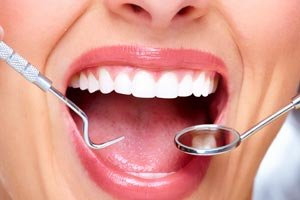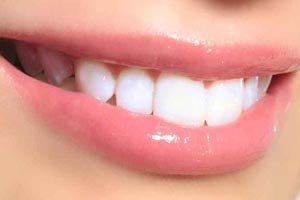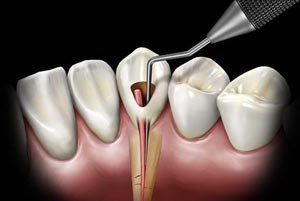Dental caries
Dental caries, also known as tooth decay or a cavity, is an infection, bacterial in origin, that causes demineralization and destruction of the hard tissues (enamel, dentin and cementum), usually by production of acid by bacterial fermentation of the food debris accumulated on the tooth surface. If demineralization exceeds saliva and other remineralization factors such as from calcium and fluoridated toothpastes, these hard tissues progressively break down, producing dental caries (cavities, holes in the teeth). The bacteria most responsible for dental cavities are the mutans streptococci, most prominently Streptococcus mutans and Streptococcus sobrinus, and lactobacilli. If left untreated, the disease can lead to pain, tooth loss and infection. Today, caries remain one of the most common diseases throughout the world. Cariology is the study of dental caries.
The presentation of caries is highly variable. However the risk factors and stages of development are similar. Initially it may appear as a small chalky area (smooth surface caries), which may eventually develop into a large cavitation. Sometimes caries may be directly visible. However other methods of detection such as X-rays are used for less visible areas of teeth and to judge the extent of destruction. Lasers for detecting caries allow detection without radiation and are now used for detection of interproximal decay (between the teeth). Disclosing solutions are also used during tooth restoration to minimize the chance of recurrence.
Tooth decay disease is caused by specific types of bacteria that produce acid in the presence of fermentable carbohydrates such as sucrose, fructose, and glucose. Themineral content of teeth is sensitive to increases in acidity from the production of lactic acid. To be specific, a tooth (which is primarily mineral in content) is in a constant state of back-and-forth demineralization and remineralization between the tooth and surroundingsaliva. For people with little saliva, especially due to radiation therapies that may destroy the salivary glands, there also exists remineralization gel. These patients are particularly susceptible to dental caries. When the pH at the surface of the tooth drops below 5.5, demineralization proceeds faster than remineralization (meaning that there is a net loss of mineral structure on the tooth's surface). Most foods are in this acidic range and without remineralization, this results in the ensuing decay. Depending on the extent of tooth destruction, various treatments can be used to restore teeth to proper form, function, and aesthetics, but there is no known method toregenerate large amounts of tooth structure. Instead, dental health organizations advocate preventive and prophylactic measures, such as regular oral hygiene and dietary modifications, to avoid dental caries













